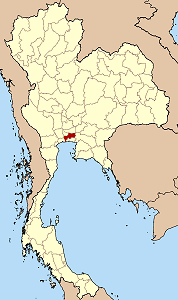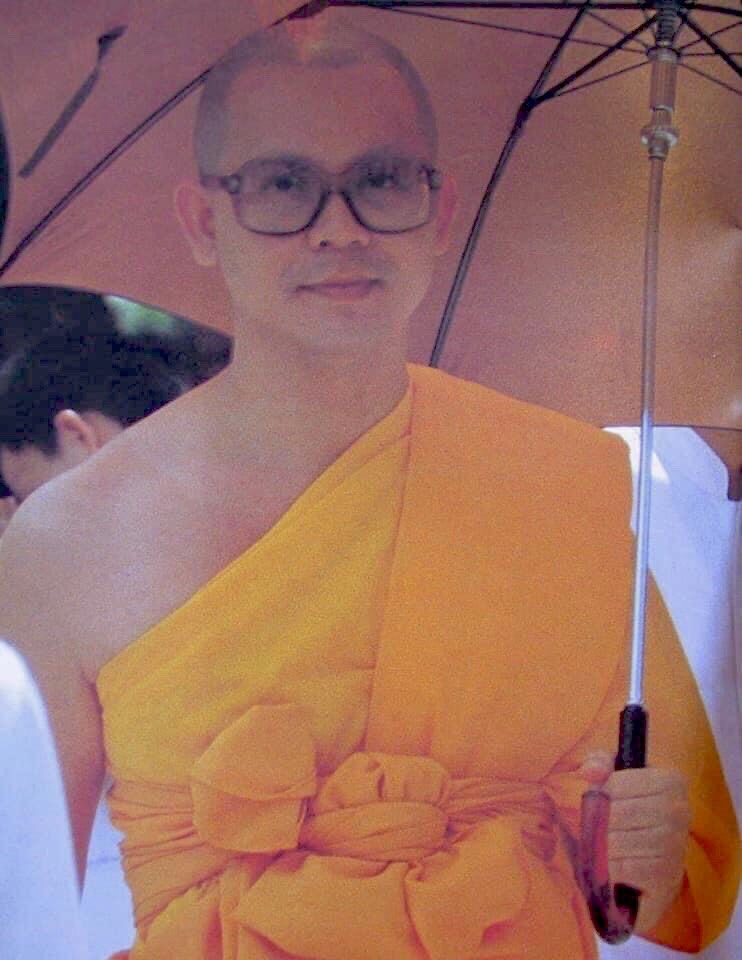|
History Of Wat Phra Dhammakaya
Wat Phra Dhammakaya ( th, วัดพระธรรมกาย) is a Buddhist temple in Thailand. It was founded in 1970 by the '' maechi'' (nun) Chandra Khonnokyoong and Luang Por Dhammajayo. The temple's founding has roots in the Dhammakaya tradition founded by Luang Pu Sodh Candasaro at Wat Paknam Bhasicharoen in the early 20th century. Wat Phra Dhammakaya is known for its modern dissemination methods and use of technology. The temple was initially founded as a meditation center, after Maechi Chandra and the just ordained monk Luang Por Dhammajayo could no longer accommodate the rising number of participants in their activities at Wat Paknam Bhasicharoen, becoming an official temple in 1977. The temple experienced rapid growth during the 1980s, when the temple's programs became widely known among the urban middle class. Wat Phra Dhammakaya expanded its area quickly during this period and started building its iconic ''stupa'' (pagoda). During the period of the 1997 Asia ... [...More Info...] [...Related Items...] OR: [Wikipedia] [Google] [Baidu] |
Dhammakaya Cetiya Night
Dhammakāya is a Pāli term which means "body of dharma", "body of truth" or the "body of enlightenment". Its Sanskrit equivalent is Dharmakāya. It can refer to: * Dhammakāya, in Theravāda Buddhism, a figurative term meaning the sum of the Buddha's teachings * Dhammakaya Tradition, Thai Buddhist tradition, mostly known through Wat Phra Dhammakaya * Dhammakaya Tradition UK, specific lineage of Thai Buddhism in Britain * Dhammakaya meditation, a Buddhist meditation technique * Dhammakaya Media Channel, former name of Global Buddhist Network, Buddhist television channel owned by Wat Phra Dhammakaya Wat Phra Dhammakaya ( th, วัดพระธรรมกาย, , ) is a Buddhist temple (''wat'') in Khlong Luang district, in the Pathum Thani province north of Bangkok, Thailand. It was founded in 1970 by the ''maechi'' (nun) Chandra Kh ... {{Disambig th:ธรรมกาย ... [...More Info...] [...Related Items...] OR: [Wikipedia] [Google] [Baidu] |
Bhumibol Adulyadej
Bhumibol Adulyadej ( th, ภูมิพลอดุลยเดช; ; ; (Sanskrit: ''bhūmi·bala atulya·teja'' - "might of the land, unparalleled brilliance"); 5 December 192713 October 2016), conferred with the title King Bhumibol the Great in 1987 (officially conferred by King Vajiralongkorn in 2019), was the ninth monarch of Thailand from the Chakri dynasty, titled Rama IX. Reigning since 9 June 1946, he was the world's longest-reigning current head of state from the death of Emperor Hirohito of Japan in 1989 until his own death in 2016, and is the third-longest verified reigning sovereign monarch in world history after King Louis XIV and Queen Elizabeth II, reigning for 70 years and 126 days. During his reign, he was served by a total of 30 prime ministers beginning with Pridi Banomyong and ending with Prayut Chan-o-cha. ''Forbes'' estimated Bhumibol's fortune – including property and investments managed by the Crown Property Bureau, a body that is neither private n ... [...More Info...] [...Related Items...] OR: [Wikipedia] [Google] [Baidu] |
Maha Chakri Sirindhorn
Princess Maha Chakri Sirindhorn, The Princess Royal and Princess Debaratana Rajasuda ( th, มหาจักรีสิรินธร, ; ; born April 2, 1955), formerly Princess Sirindhorn Debaratanasuda Kitivadhanadulsobhak ( th, สมเด็จพระเจ้าลูกเธอ เจ้าฟ้าสิรินธรเทพรัตนสุดา กิติวัฒนาดุลโสภาคย์; ), is the second daughter of King Bhumibol Adulyadej and younger sister of King Vajiralongkorn.; ). After Vajiralongkorn's coronation, Sirindhorn was invested of the title Somdech Phra Kanishthadhiraj Chao Krom Somdech Phra Debaratnarajsuda Chao Fa Maha Chakri Sirindhorn Maha Vajiralongkorn Vorarajbhakti Sirikitchakarinibirayabadhana Rathasimagunakornpiyajat Sayamboromrajakumari ( th, สมเด็จพระกนิษฐาธิราชเจ้า กรมสมเด็จพระเทพรัตนราชสุดา เจ้าฟ้าม� ... [...More Info...] [...Related Items...] OR: [Wikipedia] [Google] [Baidu] |
Acacia
''Acacia'', commonly known as the wattles or acacias, is a large genus of shrubs and trees in the subfamily Mimosoideae of the pea family Fabaceae. Initially, it comprised a group of plant species native to Africa and Australasia. The genus name is New Latin, borrowed from the Greek (), a term used by Dioscorides for a preparation extracted from the leaves and fruit pods of ''Vachellia nilotica'', the original type of the genus. In his ''Pinax'' (1623), Gaspard Bauhin mentioned the Greek from Dioscorides as the origin of the Latin name. In the early 2000s it had become evident that the genus as it stood was not monophyletic and that several divergent lineages needed to be placed in separate genera. It turned out that one lineage comprising over 900 species mainly native to Australia, New Guinea, and Indonesia was not closely related to the much smaller group of African lineage that contained ''A. nilotica''—the type species. This meant that the Australasian lineage (by ... [...More Info...] [...Related Items...] OR: [Wikipedia] [Google] [Baidu] |
Ubosot
The ordination hall is a Buddhist building specifically consecrated and designated for the performance of the Buddhist ordination ritual ('' upasampada'') and other ritual ceremonies, such as the recitation of the Patimokkha. The ordination hall is located within a boundary () that defines "the space within which all members of a single local community have to assemble as a complete Sangha () at a place appointed for ecclesiastical acts ()." The constitution of the ''sīmā'' is regulated and defined by the Vinaya and its commentaries and sub-commentaries. Burmese ordination halls In Burmese, ordination halls are called ''thein'' (), derived from the Pali term , which means "boundary." The ''thein'' is a common feature of Burmese monasteries (''kyaung''), although the ''thein '' may be not necessarily be located on the monastery compound itself. Shan ordination halls, called ''sim'' (သိမ်ႇ)'','' are exclusively used for events limited to the monkhood. The central imp ... [...More Info...] [...Related Items...] OR: [Wikipedia] [Google] [Baidu] |
Baht
The baht (; th, บาท, ; currency sign, sign: ฿; ISO 4217, code: THB) is the official currency of Thailand. It is divided into 100 ''satang'' (, ). The issuance of currency is the responsibility of the Bank of Thailand. Society for Worldwide Interbank Financial Telecommunication, SWIFT ranked the Thai baht as the 10th-most-frequently used world payment currency as of January 2019. History The Thai baht, like the Pound (currency), pound, originated from a traditional unit of mass. Its currency value was originally expressed as that of silver of corresponding weight (now defined as 15 grams), and was in use probably as early as the Sukhothai Kingdom, Sukhothai period in the form of bullet coins known in Thai as ''phot duang''. These were pieces of solid silver cast to various weights corresponding to a Thai units of measurement, traditional system of units related by simple fractions and multiples, one of which is the ''baht (unit), baht''. These are listed in the follo ... [...More Info...] [...Related Items...] OR: [Wikipedia] [Google] [Baidu] |
Don Mueang International Airport
Don Mueang International Airport ( th, ท่าอากาศยานดอนเมือง, , , or colloquially as , ) is one of two international airports serving the Bangkok Metropolitan Region, the other one being Suvarnabhumi Airport (BKK). Before Suvarnabhumi opened in 2006, Don Mueang was previously known as Bangkok International Airport ( th, ท่าอากาศยานกรุงเทพ, ). The airport is considered to be one of the world's oldest international airports and Asia's oldest operating airport. It was officially opened as a Royal Thai Air Force base on 27 March 1914, although it had been in use earlier. Commercial flights began in 1924, making it one of the world's oldest commercial airports. The airport consists of Terminal 1 for international flights and Terminal 2 for domestic flights which are connected by a unique glass exterior elevated walkway. The airport also featured an exterior walkway connected to the Amari hotel. The first comm ... [...More Info...] [...Related Items...] OR: [Wikipedia] [Google] [Baidu] |
Rai (area)
A ''rai'' ( th, ไร่, ) is a unit of area equal to 1,600 square metres (16 ares, 0.16 hectares, 0.3954 acres), and is used in measuring land area for a cadastre or cadastral map. Its current size is precisely derived from the metre, but is neither part of nor recognized by the modern metric system, the International System (SI). The rai is defined as 1 square ''sen'' or (40 m × 40 m). It can be divided in four ''ngaan'' or 400 square '' wa''. It is commonly used in Thailand. Although recognized by the SI, its use is not encouraged. The word ''rai'' also means plantation. See also * Thai units of measurement * Orders of magnitude (area) This page is a progressive and labelled list of the SI area orders of magnitude, with certain examples appended to some list objects. to square metres 10−8 to 10−1 square metres 100 to 107 square metres 108 to 1014 square metres 101 ... References External links Area metric conversion British and U.S., Japanese, Chines ... [...More Info...] [...Related Items...] OR: [Wikipedia] [Google] [Baidu] |
Khunying
Honorifics are a class of words or grammatical morphemes that encode a wide variety of social relationships between interlocutors or between interlocutors and referents.Foley, William. ''Anthropological Linguistics: An Introduction''. Oxford: Blackwell, 1997. Honorific phenomena in Thai include honorific registers, honorific pronominals, and honorific particles. Historical development Thai honorifics date back to the Sukhothai Kingdom, a period which lasted from 1238 to 1420 CEKhanittanan, Wilaiwan. "An aspect of the origins and development of linguistic politeness in Thai". ''Broadening the horizon of linguistic politeness''. Ed. Robin T. Lakoff and Sachiko Ide. Philadelphia: John Benjamins Publishing, 2005. 315-335. During the Sukhothai period, honorifics appeared in the form of kinship terms. The Sukhothai period also saw the introduction of many Khmer and Pali loanwords to Thai. Later, in the Ayutthaya Kingdom (1351 to 1767 CE), a new form of honorific speech evolved. ... [...More Info...] [...Related Items...] OR: [Wikipedia] [Google] [Baidu] |
Phra Dhammajayo
Luang Por Dhammajayo ( th, ธมฺมชโย, , '' Luang Por'' being a deferential title), also known by the lay name Chaiyabun Suddhipol, is a Thai Buddhist monk. He was the abbot of the Buddhist temple Wat Phra Dhammakaya, the post he held until 1999 and again from 2006 to December 2011. In December 2016, he was given the post of honorary abbot of the temple. He is a student of the nun ('' maechi'') Chandra Khonnokyoong, and is the most well-known teacher of Dhammakaya meditation. He has been subject to criticism and government response. However, he continues to be a spiritual leader that has significant influence in Thai society. Luang Por Dhammajayo's approach to Buddhism seeks to combine the ascetic and meditative life with modern personal ethics and social prosperity. Luang Por Dhammajayo met Maechi Chandra in his student years, and learnt about Buddhism from her. During his student years, he met his fellow student who later became known as Luang Por Dattajivo. Luang ... [...More Info...] [...Related Items...] OR: [Wikipedia] [Google] [Baidu] |
Wat Phra Dhammakaya Aerial View May 2010
A wat ( km, វត្ត, ; lo, ວັດ, ; th, วัด, ; khb, 「ᩅᨯ᩠ᨰ」(waD+Dha); nod, 「ᩅ᩠ᨯ᩶」 (w+Da2)) is a type of Buddhist temple and Hindu temple in Cambodia, Laos, East Shan State, Yunnan, the Southern Province of Sri Lanka and Thailand. The word ''wat'' is a Thai word that was borrowed from Sanskrit ''vāṭa'' ( Devanāgarī: वाट), meaning 'enclosure'. The term has varying meanings in each region, sometimes referring to a specific type of government-recognised or large temple, other times referring to any Buddhist or Hindu temple. Overview Strictly speaking, a ''wat'' is a Buddhist sacred precinct with vihara (quarters for bhikkhus), a temple, an edifice housing a large image of Buddha and a facility for lessons. A site without a minimum of three resident ''bhikkhu''s cannot correctly be described as a wat although the term is frequently used more loosely, even for ruins of ancient temples. As a transitive or intransitive ve ... [...More Info...] [...Related Items...] OR: [Wikipedia] [Google] [Baidu] |






.jpg)